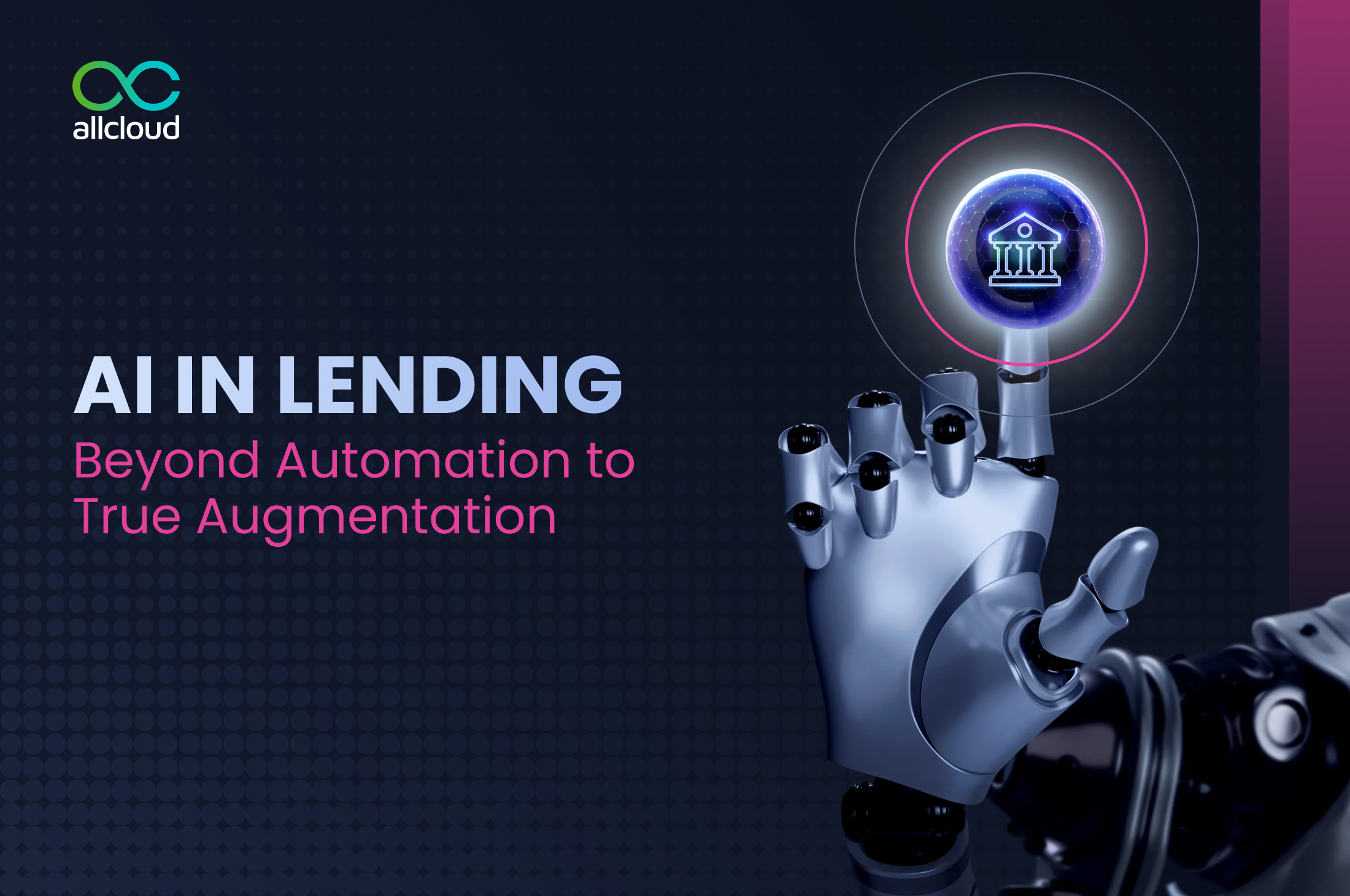Why lending’s future belongs to human–machine collaboration, not replacement?
Get In Touch

Heading 1
Heading 2
Heading 3
Heading 4
Heading 5
Heading 6
Lorem ipsum dolor sit amet, consectetur adipiscing elit, sed do eiusmod tempor incididunt ut labore et dolore magna aliqua. Ut enim ad minim veniam, quis nostrud exercitation ullamco laboris nisi ut aliquip ex ea commodo consequat. Duis aute irure dolor in reprehenderit in voluptate velit esse cillum dolore eu fugiat nulla pariatur.
Block quote
Ordered list
- Item 1
- Item 2
- Item 3
Unordered list
- Item A
- Item B
- Item C
Bold text
Emphasis
Superscript
Subscript
In The Second Machine Age, Erik Brynjolfsson and Andrew McAfee explore how artificial intelligence and digital technologies are reshaping economies, industries, and decision-making.
They describe a world where exponential computing allows machines to process information at a scale no human could match. Yet the book’s most profound idea is not the rise of automation—it is the rise of augmentation.
Technology becomes most powerful not when it replaces humans, but when it strengthens them. Nowhere is this more relevant than in lending.
For decades, lending relied on paperwork, branch evaluations, and human judgment shaped by experience. Today, much of the industry has shifted to automated workflows, digital scoring models, and instant approval systems. But automation alone cannot solve for the complexity of real borrowers and real risk.
Lending is still emotional, contextual, and deeply human. What AI can do, however—as Brynjolfsson and McAfee argue—is provide the precision, scale, and predictive power that humans cannot achieve alone.


As lenders modernize, many begin with automation: eliminating manual steps, digitizing forms, and speeding up basic tasks. But augmentation represents a far more transformative shift.
When AI works alongside humans, it enables underwriters to analyze thousands of variables simultaneously, gives risk teams early warnings of repayment stress, helps collections distinguish between borrowers facing temporary hardship and those likely to default, and identifies potential fraud before it happens.
Automation smooths processes, augmentation elevates decision-making.
This distinction matters deeply because credit cannot be reduced to algorithms alone. Lending must understand intent, capacity, circumstances, and behavior—factors that often lie outside structured data.
Machines excel at speed and pattern recognition, but humans excel at empathy, values, and interpretation.
The book makes this point repeatedly:- the strongest outcomes emerge from human–machine collaboration.
Applied to lending, it means a risk engine can detect financial stress early, but a human decides how to intervene, AI can calculate probability of default, but humans determine the tone and timing of communication, automation can approve loans instantly, but humans shape the policies, ethics, and boundaries that protect borrowers.

The impact of AI-driven credit systems extends beyond underwriting. Real-time risk modeling enables decisions that evolve with each data point.
Borrower-level personalization ensures that two customers with identical bureau profiles are treated differently if their behavior signals diverge. Predictive collections identify distress before it becomes delinquency, reducing losses without compromise to customer experience.
Contextual underwriting allows lenders to incorporate GST histories, bank statements, device signals, fraud flags, and behavioral patterns—creating a holistic view no manual team could assemble at scale.
This does not diminish human contribution, it enhances it. AI becomes a co-pilot for credit officers, not a replacement. Machines process. Humans interpret. Machines predict. Humans decide.
That balance, Brynjolfsson and McAfee argue, is the foundation of responsible innovation.
In Lending, where trust is currency and human dignity is central, this balance becomes even more essential. Borrowers are not data points, they are individuals navigating life events, uncertainties, and aspirations.
A purely automated system cannot differentiate a borrower who can repay from one who genuinely needs flexibility. It cannot distinguish emotional intent from financial reality.
Only augmented systems—AI + human—can bridge this gap with fairness and empathy.


.png)



